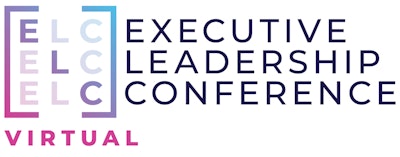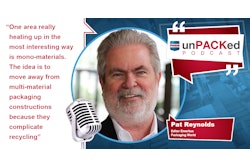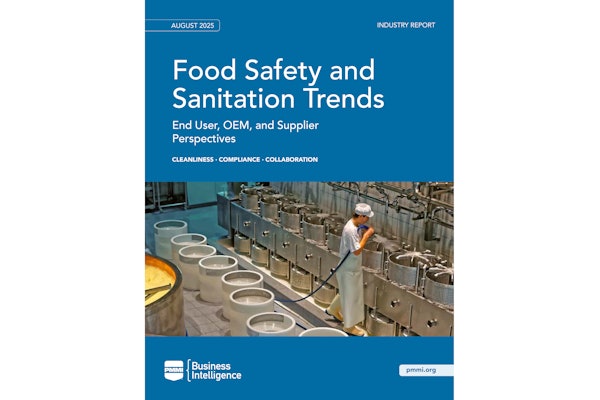The PMMI virtual Executive Leadership Conference (ELC) in April brought together three representatives from CPG companies who shared their experiences on the manufacturing and packaging floor during the pandemic, while offering advice to OEMs on how to help with their future needs.
The panel, moderated by Packaging World editor Matt Reynolds, included:
Lisa Rathburn, vice president of engineering and continuous improvement for T. Marzetti Company, which makes products for both retail and restaurants, and is in the midst of major expansion projects across several plants, adding nine manufacturing lines in a 12-month period.
Mark Mikol, senior director at Schwan’s Company which, now an affiliate of South Korea-based CJ CheilJedang (CJCJ Food, Americas), is also in expansion mode which includes building state-of-the-art production and packaging facilities with an investment in automation.
And Rick Rice, a controls engineer at Crest Foods Co., Inc., a manufacturer of consumer products with a global dairy stabilizer business, and which also has a large contract packaging division.
The conversation touched on the typical hot topics of remote access, managing inventory during supply chain disruptions, and virtual factory acceptance tests (FATs). But the panel also made a plea for more machine flexibility in order to handle different packaging materials, as well as help training the next generation workforce on existing machines, and, in general, just more transparency.
As an example, at T. Marzetti, there was a simple component needed for a control panel which is normally in stock, but this time around it was not available due to supply chain disruptions related to the pandemic. That resulted in engineers trying to connect across regions and with different distributors, working together to find out where they could source the component. “One of the things we’re trying to do is broaden our understanding of where there are limits in the equipment supply chain,” Rathburn said. “Our ask is for communication, so that we’re aware of any constraints early on. As OEMs start to see constraints in their supply, I’d like them to communicate it to us as customers so that we can plan around it.”
Supply chain disruptions also had a major impact on the materials side. “We’ve had a lot of material changes because of shortages, so as we’re thinking about new equipment we want that equipment to be flexible, and to be able to run slightly different specs of materials,” said Schwan’s Mikol. “So that’s one thing for the OEMs to keep in mind that was really highlighted to me as supply issues came in. If the board can be a little bit weaker, a little bit different type of grade or some other things, it’s important to make sure that your equipment is flexible enough to handle that.”
Managing equipment, materials, and FATs
In response to the CPGs’ requests for more equipment flexibility related to materials, an ELC audience member asked if the panelists ever discuss material changes with machinery OEMs? And, do they provide machine builders with material to test before moving into production?
As a former machine builder who moved to the end user side at Crest Foods, Rice acknowledged that the most frustrating thing about starting out a new project as an OEM is not knowing what material the machine will run. “You get three-quarters of the way doing your build and then find out, ‘Oh yeah, and we use metallized film,’ or ‘we use reflective film,’ and it really throws a wrench in the system.”
Now, as a CPG and co-packer who is buying that equipment, Rice has leveraged his relationship with some of the OEMs that he’s worked with—or for—in the past, and there’s many conversations to be had around machine capabilities. Such as, “Your brochure says this, but what will it really do?”
“It’s not that we’re trying to push the envelope. As a co-packer, our run rules change all the time,” Rice said. “We’ve got a couple of [clients] who are really innovative and they will change up packaging in midstream. They’ll want to make a box with a rounded edge on it instead of a standard box. How do we not have a machine that was used for a particular product run and then just set it aside and never use it again? So flexibility is very important. And because of the changes in the individual pouch and materials for pouching lately, we want to have conversations about what else could it potentially run, and what would it take to change your machine to suit the new packaging trends that are coming?”
Mikol echoes the need for equipment flexibility due to material changes and shortages, but notes it’s a good conversation to have with OEMs during the design phase as well as the factory acceptance test (FAT). “As to the learning here with COVID and other things, I think we may bring more than one material to future FATs, just to have some understanding of what the limits are of the equipment. It just depends, too, on coordination and location. We have frozen products, which sometimes are challenging to send overseas. So, how do you test those? And then materials as well. Overseas cartons are different than North American cartons, and all those types of things.”
OEMs were also curious to know if the virtual FATs from the past year have translated into successful site acceptance tests (SATs). The answer: It depends on the sophistication of the machine and the people involved.
“Regardless of whether an FAT is virtual or in-person, if the FAT is for a technology that we’re familiar with, the project carries a lower risk, and the startup post-FAT typically goes a lot more smoothly,” said Rathburn. “If the technology is new to us, then having plant people physically present at an FAT to learn alongside the technicians would be better than trying to conduct it virtually. Because we know we can’t replicate our production in the machine shop environment, there will always be start up activities that we’re going to have to learn and work through in our plants. Because of this, I don’t think we will switch to doing all FATs virtually going forward; there may be some, but I think our decision will be based on how complicated the technology is for us, and if we have done it before.”
Rice adds that Crest Foods has sent non-technical people to the virtual FAT due to the shortage of skilled technicians available, thinking they could do the same kind of walkaround as an experienced tech would do. But it didn’t work as well. “Somebody who’s non-technical doesn’t look at a machine like the people who are actually going to work on it, or fix it, or run it, and it wasn’t as successful for us,” he said.
People impact the process
Just as Rice mentioned, having the right level of technical expertise is important to the success of any project. So having the right skillset on staff is needed with the increasing complexity of machines, and constantly changing consumer requirements. With that in mind, Packaging World’s Reynolds asked the panel how they address employee training, and how can OEMs help out in that regard?
For many CPGs, Crest Foods included, there is a workforce that has been using the same packaging machines for 35 years, but now the people, and maybe even the machines, are retiring. “Suddenly, we realize we’re putting people in front of machines that really don’t have the core understanding of them,” Rice said. “I think we are going to have to re-engage OEMs and bring them back to the table.”
That re-engagement may be in the form of virtual training. “Virtual allows for you to not cut out a slice of the day and say, “Here’s when the training’s going to be,” and take those people away from their regular jobs that they’re doing,” Rice said. “Virtual will, much like streaming services on TV, allow you to engage when you want to engage. And yes, OEMs are going to be a big part of that, and it starts with a mindset change at the CPG level."
Rathburn agreed that OEMs play an important role in training the workforce of the future. “At Marzetti, our mission statement is to ‘nourish growth with all that we do’, which includes the growth of the employees, by developing them and giving them time to do training,” she said. “The harder part is developing training for troubleshooting the unexpected. How do you teach people to troubleshoot under the pressure of daily production? This is where I think the OEMs can help. They teach their field technicians to troubleshoot, and perhaps there is some better methodology, other than reading a manual, that could be leveraged by our plant operations and maintenance teams.”
Amid all of the talk about remote access, virtual FATs, and virtual training, when asked about attending PACK EXPO Las Vegas in September, the panel agreed that in-person is the best approach to such a big event.
“We can’t wait to get back,” said Mikol. “I think with people now getting vaccinated and wearing masks and those types of things, we’re looking forward to seeing a show and actually talking to people live, and looking at new technology.”
“I’m big on in-person as well,” echoed Rice. “As an OEM, I was attending the shows all the time and it was a great time to network with other people. As it is, certainly, as a CPG. If I get to leave the plant, then I can solely focus on being with the OEMs and truly getting into what’s good for us and what’s good for our future.”






























